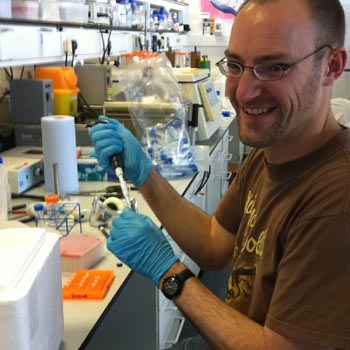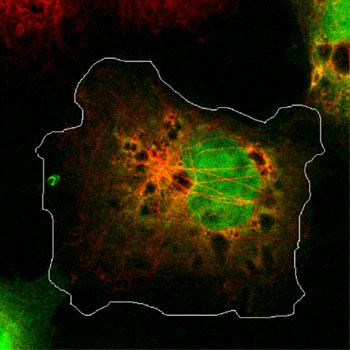Two for one for INP
Published: 5 July 2011
The work of two academics from the Institute of Neuroscience and Psychology has received high commendation from two separate professional bodies
The work of two academics from the Institute of Neuroscience and Psychology has received high commendation from two separate professional bodies.
 Dr Frank Christian, who works in Professor Miles Houslay’s Neuroscience and Molecular Pharmacology research group, has just been awarded the Rottendorf Europe Prize Award from the Rottendorf Foundation. This is for his translational work in identifying novel means of developing therapeutics interacting with the cAMP signalling pathway.
Dr Frank Christian, who works in Professor Miles Houslay’s Neuroscience and Molecular Pharmacology research group, has just been awarded the Rottendorf Europe Prize Award from the Rottendorf Foundation. This is for his translational work in identifying novel means of developing therapeutics interacting with the cAMP signalling pathway.
The Rottendorf foundation aims to support young scientists in the field of pharmacy, the award ceremony will take place this October in the Festsaal/Senatssaal of the Rheinische Friedrich-Wilhelms-University in Bonn, Germany and Dr Christian and Professor Houslay will attend
Dr Hannah Murdoch, who works in the same research group as Dr Christian, has also had the quality of her research recognized by having her research selected to feature on the cover of the June issue of ‘Journal of Cell Science’.
The article gives new insights into a protein called Lis1, This article gives major new insights into a protein called Lis1, where genetic abnormalities cause deletions within Lis1 causing the severe neurodevelopmental disorder, lissencephaly.
 This disease is characterised by loss of convolutions of cortical brain surfaces resulting from defective neuronal migration. This work gives major new insights into how the ability of Lis1 to cause cells to migrate in the right direction can be regulated. It also uncovers a new function for PDE4 enzymes, whose inhibitors are potent anti-depressants, and that were thought only to function by degrading the signalling molecule cAMP. Now, for the first time, it has shown that they can also act as cAMP sensors to output functional effects on cell migration through dynamically interacting with Lis1.
This disease is characterised by loss of convolutions of cortical brain surfaces resulting from defective neuronal migration. This work gives major new insights into how the ability of Lis1 to cause cells to migrate in the right direction can be regulated. It also uncovers a new function for PDE4 enzymes, whose inhibitors are potent anti-depressants, and that were thought only to function by degrading the signalling molecule cAMP. Now, for the first time, it has shown that they can also act as cAMP sensors to output functional effects on cell migration through dynamically interacting with Lis1.
The discoveries made in this study can be expected to have profound implications for the design of new therapeutics to treat mental illness.
Image 1 shows a photo of Dr Frank Christian working in Professor Houslay's Laboratory
Image 2 shows a photo of Lis1-regulated 'aster' formation in cells: a process that influences directed cell migration. Taken by Dr Hannah Murdoch working in Professor Houslay's Laboratory
First published: 5 July 2011
<< Jul

